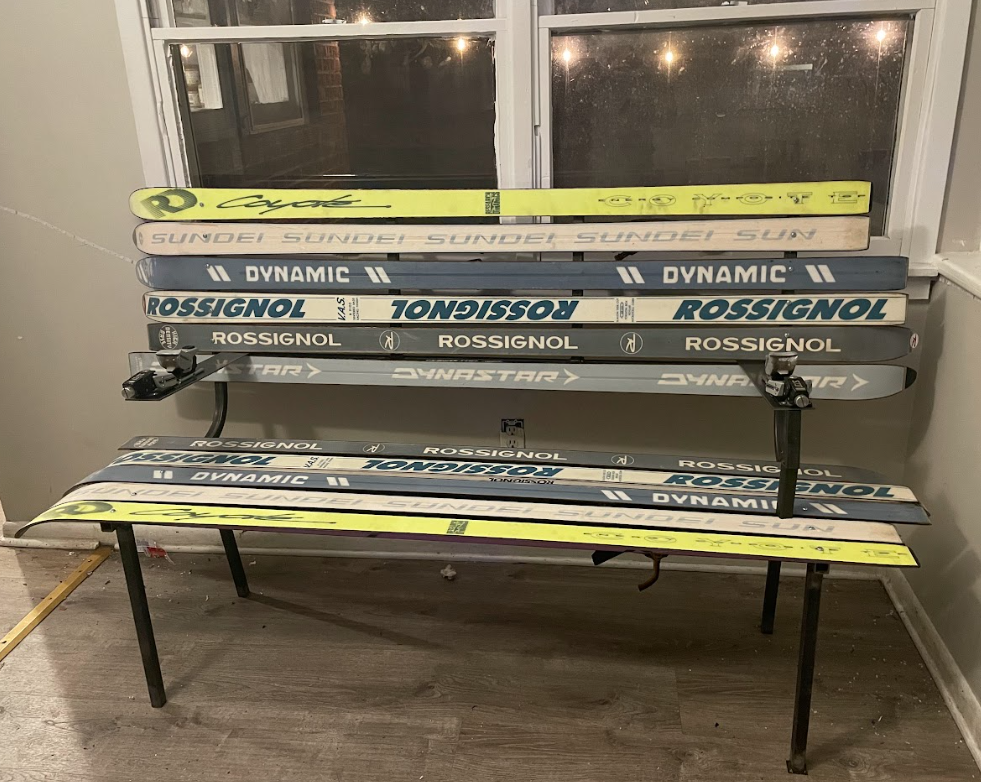
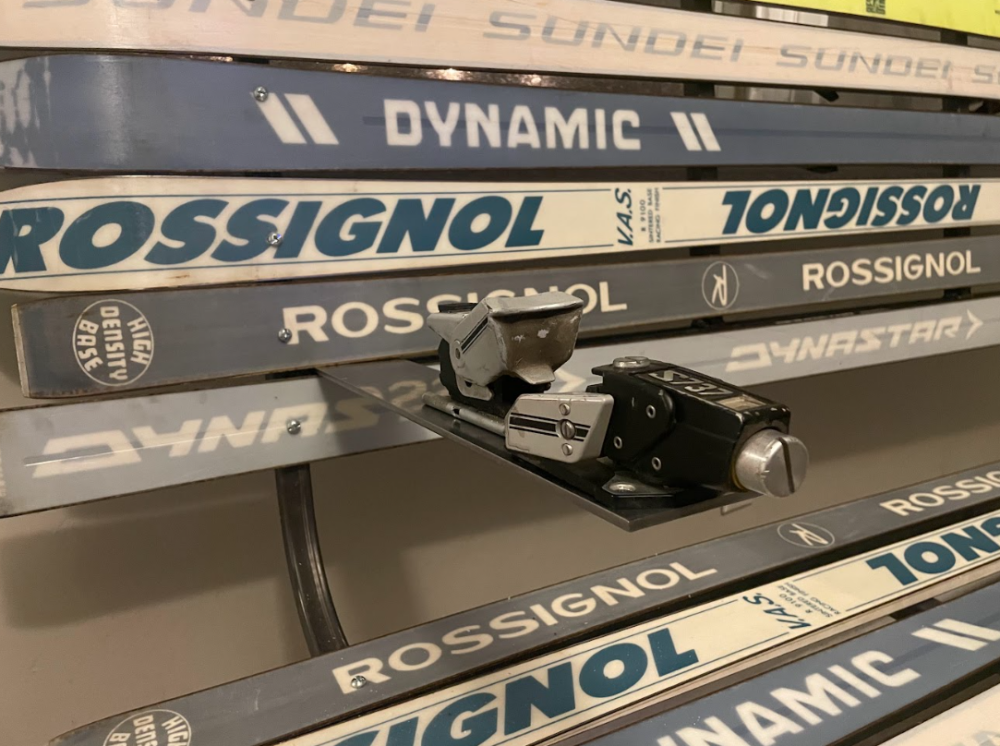
For my final project I fully designed and fabricated a ski bench in the aesthetic of Retro Skiing. The goal of the project was to design a product that embodies by personal aesthetic. I believe my personal aesthetic emerged when my dad took me skiing for the first time at a very young age. Ever since skiing has changed my life and dictated where I move around the world. The more specific aesthetic I am trying to achieve for my final project is Retro Skiing. The retro ski aesthetic primarily draws from the 80 design movement of the 20th century, which included crazy patterns and neon colors. The Retro Skiing aesthetic displays the neon and vibrant colors of 80s fashion, and emphasizes the style and fun in skiing. I implemented this aesthetic in my main project by making a vintage ski bench.
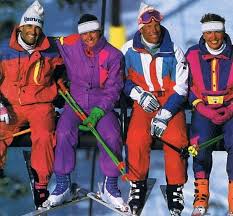

The Retro Skiing aesthetic started primary in the 80s. During this time period, there was a new age influence in the sport. Freestyle skiing became professional in the 80s which allowed for a much more relaxed and entertaining style of skiing. Freestyle skiing was also advanced due to the increasing number of wide powder skis on the market, which were improved versions from the first models in the early 70s. The ski industry was growing as a whole during this time. This enabled ski resorts and ski apparel brands to improve their lifts, snow conditions, and equipment for this new generation of skiers. Freestyle skiing gave the sport new life, and made professional skiing more relaxed and more about style.
This era of skiing was unique because of the emergence of freestyle skiing and the introduction of skiing for fun. This new type of skiing along with the crazy neon patterns of 80s fashion made for a very unique aesthetic and era of skiing. These neon patterns, retro lettering, and vintage ski shape and design inspired my project and shaped its aesthetic throughout the design process.
I was inspired to pursue this project when I thought back to when I was skiing in Canada, at a resort that had benches all around the resort made out of snowboards. These benches had one board for the seat and one board for the backing. I made a bench using the bottom sides of skis, using only old, skinny, retro skis to incorporate the retro skiing aesthetic. I made supports with steel tubing that is bent into legs and supports for the backing.
My vision for this project was to have a piece of furniture that incorporated my love for skiing using an aesthetic that inspires me. When initially ideating the bench, I envisioned a bench where you could relax after a long day of skiing, feel the history of the skis you’re sitting on, and appreciate how far the sport has come since. Some basic design specifications I set for myself included: the bench must be stable and support itself, it must seat at least three people, the bench must incorporate some of the neon colors from the retro skiing aesthetic. These specifications helped me throughout the project visualize the final goal, which was to create a functional product that followed the aesthetic of Retro Skiing. These specifications also helped serve as a checklist, for when I completed the project, so I could make sure I accomplished everything I wanted to throughout the design process.
Some constraints that I ran into throughout the project were the transportation of materials without a car, removing ski bindings that had been attached for decades, and implementing arm rests without compromising the aesthetic and design. The constraints proved difficult and took more effort and thought throughout the design process, but I came up with resolutions for each. For the material transportation I had a friend with a car pick my bench up from the Idea Forge, for the removal of the ski bindings I purchased a metal saw that could cut through the brakes on the skis, and for the arm rests I came up with a cool and interactive cupholder design, that fits seamlessly into the aesthetic and function of the product.
In terms of aesthetic and form, I was aiming for my project to invoke the essence of freestyle skiing, and invoke nostalgia for anybody that skied in this era of skiing. My goal for the design of the bench was to fully show and display the retro patterns and design on the bottoms of the skis in order to fully capture their retro aesthetic.
After ideating my aesthetics and mocking drawings of the bench in alternate aesthetics, I knew exactly what I wanted my final project aesthetic to look like. I pursued the Retro Ski aesthetic by minimizing the steel that is exposed to the viewer. This allows the retro designs and neon colors on the bottoms of the skis to be displayed without any distraction from the structural elements of the bench. This design and aesthetic also allows for the full ski to be on display, incorporating the original shapes of the retro skis to further portray the aesthetic. In my initial sketches I also designed a rough mechanism for the dynamic pivoting cupholders. Since initially sketching this support design, the design has been slightly simplified in order to accommodate for easier fabrication and less welding.
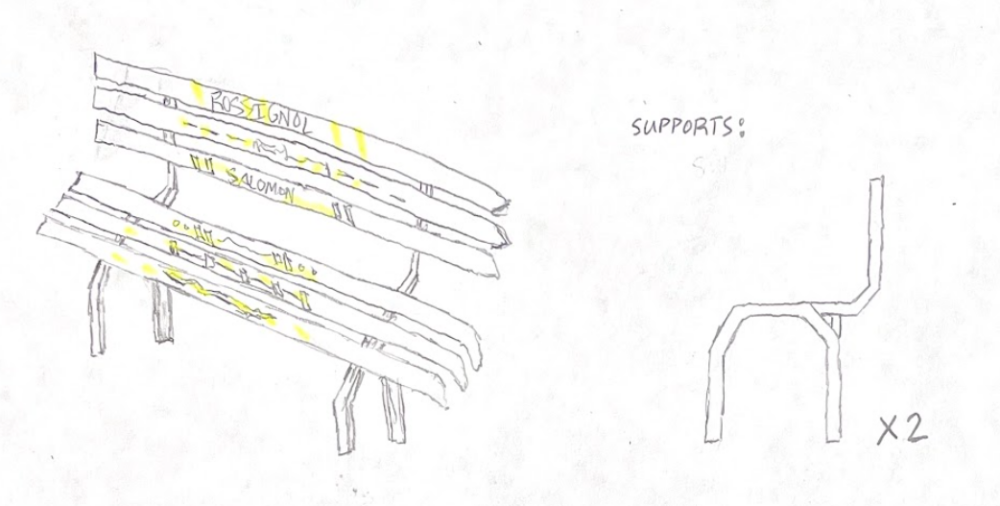
With my initial sketches and designs finalized, I then got to work on making a more exact design of the bench in SolidWorks. As I started to produce this design in CAD I came across several design changes that altered from my initial sketches. The first of these design changes was a more simple support design, that includes only 3 separate parts, and only one of those segments needing to be bent. Another design change I needed to add when I started assembling the bench in SolidWorks was the amount of skis needed. In my initial sketches I planned for 3 pairs of skis, but as I planned out the true dimensions of the bench I determined I need 5 pairs of skis to make the design work.
After finalizing the CAD assembly of the bench, and all of the part were fitting seamlessly together, I then got to work on drafting engineering drawings for the parts of the frame that needed to be machined.
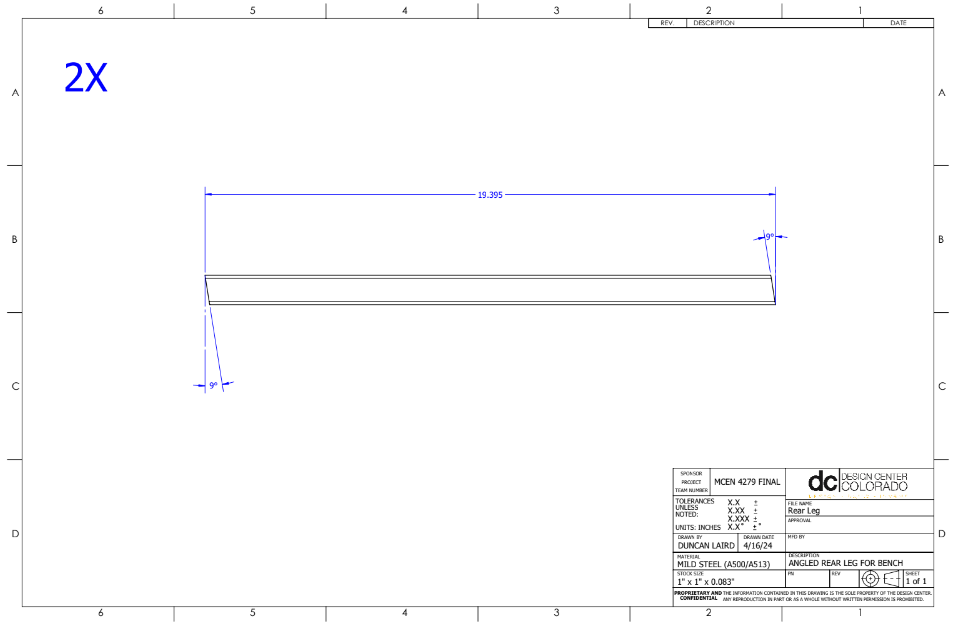
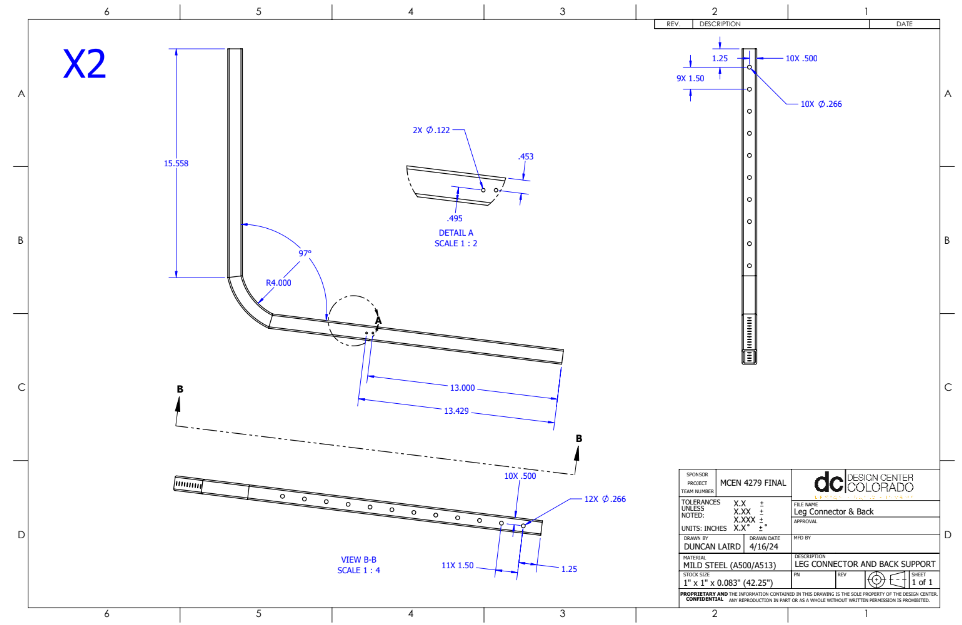
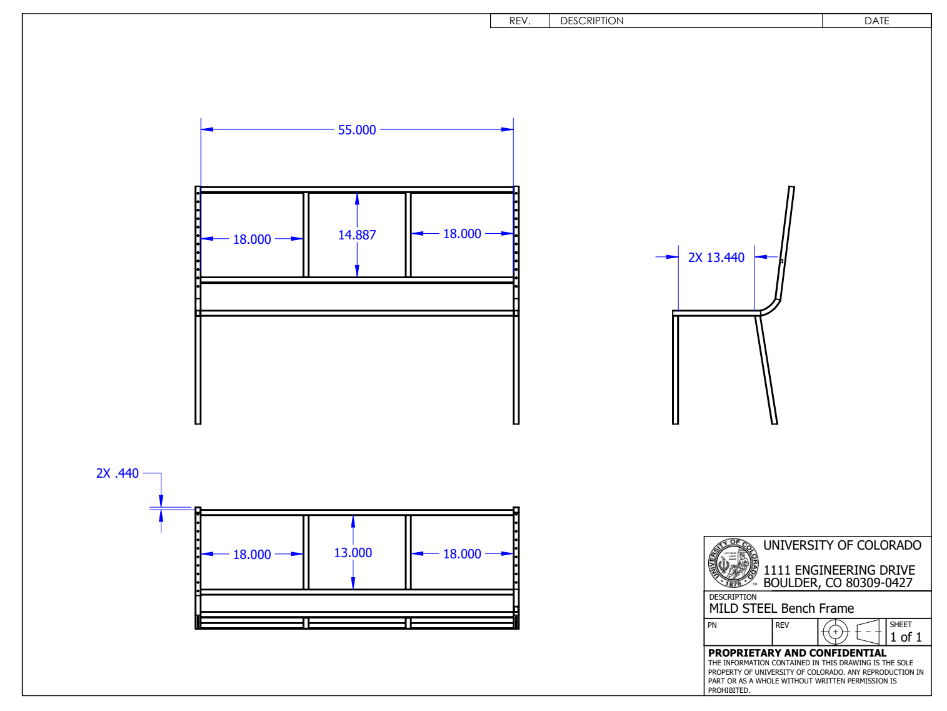
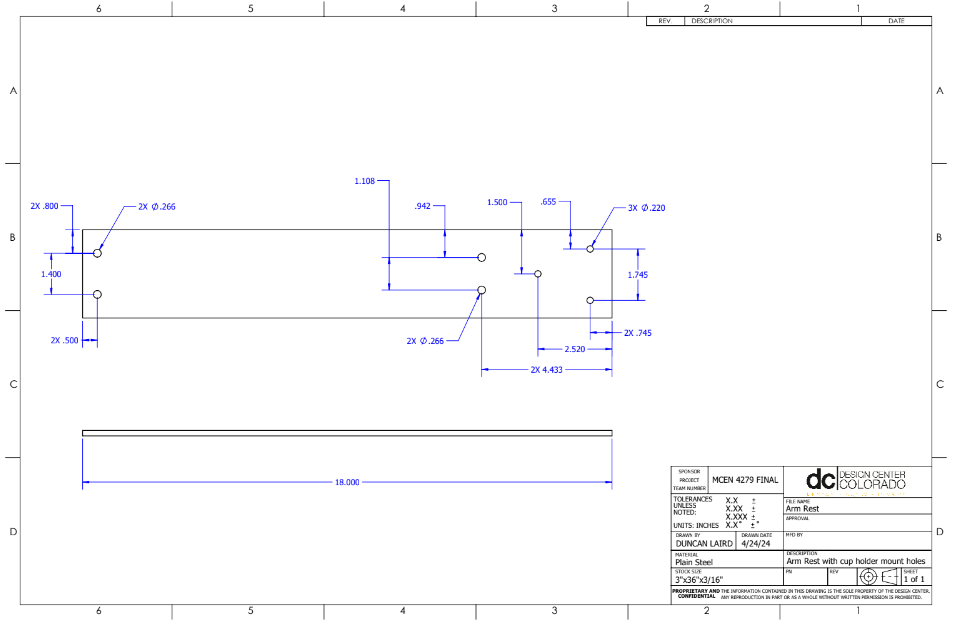
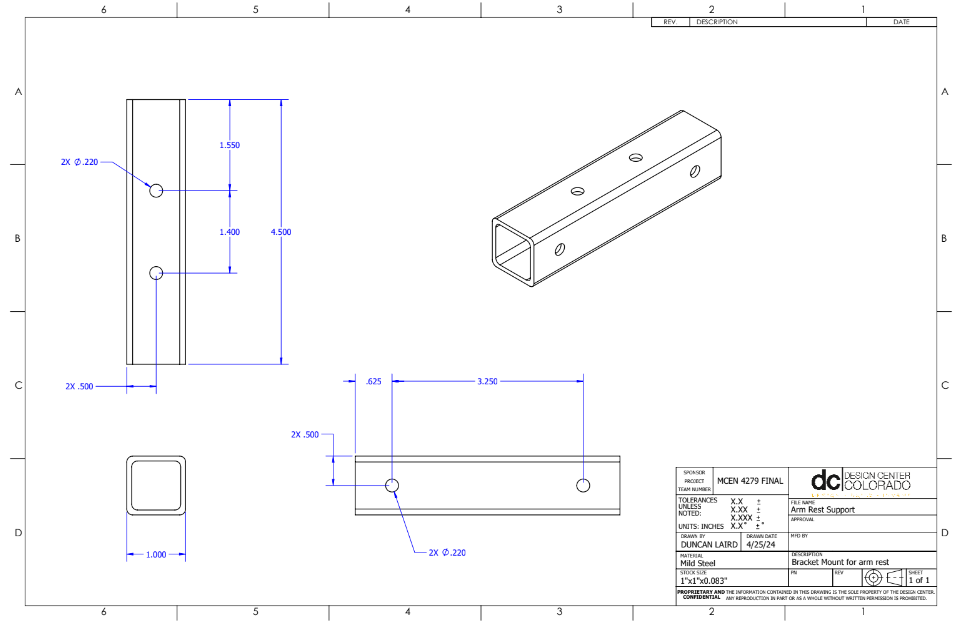
The above drawings were very important in the execution of my design and aesthetic. In order to properly create a frame that portrays the Retro Designs of the skis, the frame needs to be as minimal as possible, which requires excellent dimensioning and structural support. These drawings made sure that all parts of the frame and armrests were dimensioned and fit seamlessly together. The drawings and the machined parts allow the frame to preform its function while showing off the aesthetic of the centerpiece of the bench, which are the skis.
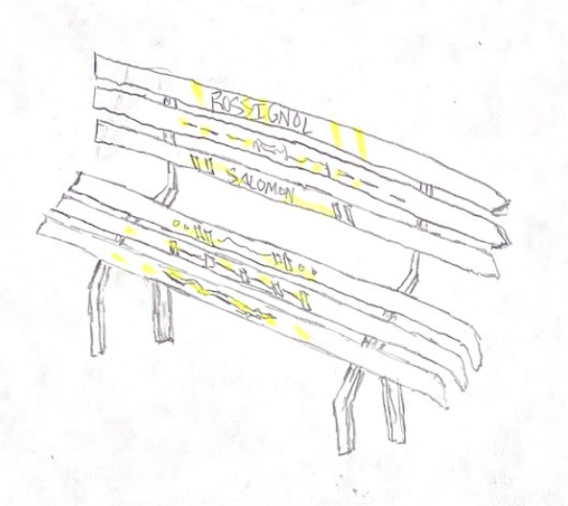

The initial design sketches were surprisingly close to the final CAD assembly, and even the final fabricated project of the bench. In my initial sketches I aimed to highlight the designs on the skis and hide any structural elements that would take away from the designs on the skis. Having this minimal frame allowed for the aesthetic and designs of the skis to shine. My initial design also accounted for the ergonomic structure that the bench needed to accommodate for comfortable seating of the user.
The final CAD assembly was really just a way for me to turn my arbitrary lengths into dimensioned parts that I could build with. I am glad that these design choices I made in my initial sketches, carried with the design throughout the project, and I’m glad that I made new design choices that enhanced the final design. One of these design choices that I came up with during fabrication was the use of the ski’s bindings as cup holders on the armrests. I like this addition to the design because it further incorporates other aspects of the skis and provides a dynamic interactive experience for the user. This is one change that was made from the final CAD design to the final product, as in the final CAD design the are rests were ski poles with 3D printed cupholders, however in the final design I decided to go with more supportive steel sheet and mount the ski binding cupholders. In terms of the three design steps as seen in pictures 9 and 10, I am proud that the design remained virtually the same and I never lost the essence of the aesthetic throughout the process.
Overall I am proud of my final design. I think it invokes the nostalgia, and retro aesthetic I was going for, while completing the function and purpose of a bench. I am excited to tweak the design in the coming weeks and enjoy sitting on the bench outside during the summer. Below are more pictures of the final fabricated product.
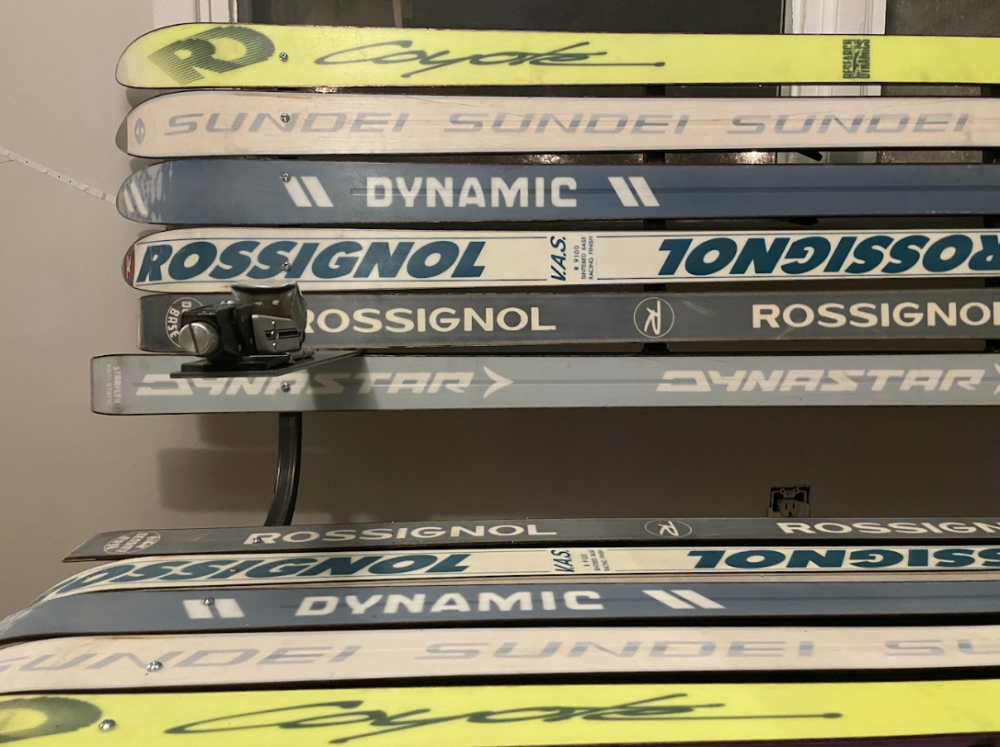

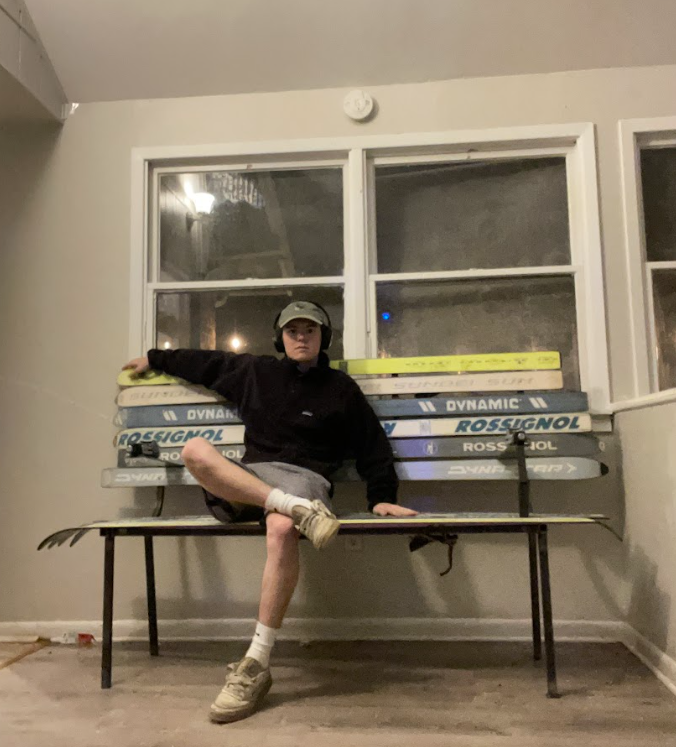
Sources
[1] https://www.facebook.com/UVU.OAC/photos/a.294685241572/10155575923116573/?type=3 [2] https://www.pinterest.com/pin/another-80s-ski-photograph-taken-by-peterlindecke-in-taos-new-mexico-for-the-german-catalogue-sportsheck-skier-bill_vip–559150109977322906/
4 Comments. Leave new
Hey Duncan, your dedication to capturing the vibrant spirit of 80s ski culture in your bench design is impressive! The clever use of vintage ski elements, especially the ski binding cup holders, really brings a sense of authenticity and fun to the piece. I think it looks awesome!
Hi Kyle, thank you for reading my post and I’m glad you like my project.
Hey Duncan!
What a cool and unique project! It reminds me of some of the cool benches and chairs I have seen up at some ski resorts. Though I do not have much experience skiing myself, I understand the retro nostalgic aesthetic you are going for and think you did a great job meeting that. One of my favorite details were the ski binding armrests, that is so creative. I am so curious as to where you got these skis. Anyways, great job, great colors and details, hope this is a great piece to have in your house!
Hi Sophia, thanks for reading my post. I got all of the skis from a guy on Facebook market place who has hundreds of vintage skis in his backyard and selling them for cheap. I bought six pairs from him, and he let me pick out which ones I wanted from his collection. It was a very cool collection.